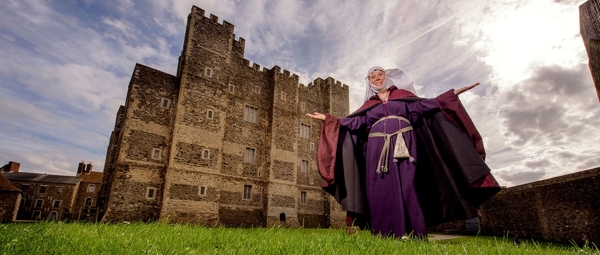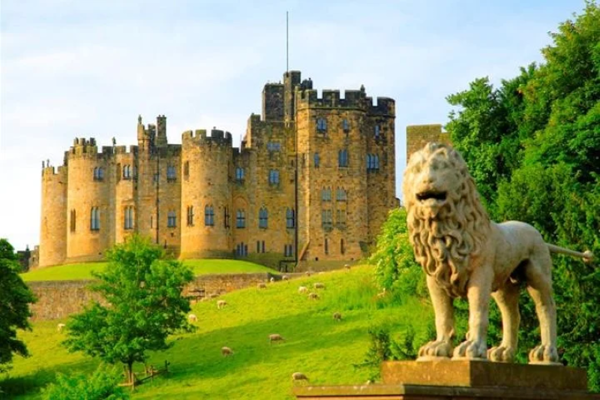Hadrian's Wall: A Timeless Frontier of Roman Ingenuity and British History
Stretching across the rugged landscapes of Northern England, Hadrian's Wall stands as an enduring testament to the engineering prowess of the ancient Romans and remains one of the most iconic and well-preserved frontier walls in the world. This colossal structure, built under the directive of Emperor Hadrian in the early 2nd century AD, holds within its stones a rich tapestry of history, reflecting the military might, cultural exchange, and evolving dynamics of Roman Britain.
Historical Background
Hadrian's Wall was constructed between AD 122 and 128 during the reign of Emperor Hadrian, who sought to establish a formidable northern boundary for the Roman Empire. The wall spanned approximately 73 miles (117 kilometers), from the banks of the River Tyne in the east to the Solway Firth in the west. Its primary purpose was to mark the northernmost limit of Roman Britannia and serve as a defensive fortification against potential invaders from the unconquered lands beyond.
Architectural Marvel
The construction of Hadrian's Wall was a monumental feat of engineering. The wall itself was made of stone, typically limestone, and stood about 15 feet (4.5 meters) high in most places. It was accompanied by a sophisticated system of forts, milecastles, and turrets strategically positioned along its length. The Roman engineers incorporated natural features like crags and cliffs into the wall's design, showcasing both practicality and strategic thinking.
Milecastles and Forts
At regular intervals along the wall, Roman soldiers erected milecastles—small forts—and turrets, each serving a specific defensive purpose. Larger forts, such as Housesteads and Vindolanda, housed garrisons and provided logistical support for the troops stationed along the wall. These military installations played a crucial role in maintaining control over the border region.
Cultural Significance
Beyond its military function, Hadrian's Wall played a pivotal role in cultural exchange. The wall served as a physical manifestation of Roman authority and civilization, influencing the daily lives of those residing south of the border. It also acted as a conduit for trade and cultural interaction between Roman Britain and the unconquered Celtic tribes to the north.
Life along the Wall
The soldiers stationed along Hadrian's Wall came from various corners of the Roman Empire, contributing to the multicultural mosaic of the region. Excavations and archaeological discoveries have provided insights into daily life at the forts, revealing barracks, bathhouses, and even evidence of leisure activities, showcasing a blend of military discipline and civilian life.
Decline and Abandonment
With the decline of the Roman Empire, the strategic importance of Hadrian's Wall diminished. By the 5th century, as Roman influence waned, the wall was gradually abandoned. The stone from the wall was repurposed for local construction, and over time, nature reclaimed parts of the structure.
UNESCO World Heritage Site
In recognition of its historical significance and architectural importance, Hadrian's Wall was designated a UNESCO World Heritage Site in 1987. This prestigious status acknowledges the wall's role in shaping the cultural landscape of Britain and its enduring legacy in the annals of history.
Visitor Experience
Today, Hadrian's Wall attracts visitors from around the world who come to explore its remnants and soak in the historical atmosphere. The Hadrian's Wall Path, a long-distance walking route, allows adventurous enthusiasts to trace the wall's course and experience the stunning landscapes that served as the backdrop to ancient history.
Museums and Interpretive Centers
Various museums and interpretive centers along the wall offer in-depth insights into Roman life, military strategy, and the history of the region. Sites like the Roman Army Museum and the Vindolanda Roman Fort and Museum showcase artifacts and provide a glimpse into the daily lives of those who once called the wall their home.
In conclusion, Hadrian's Wall stands not only as a physical barrier but also as a symbol of the intricate interplay between civilizations, the ebb and flow of history, and the enduring legacy of Roman engineering. As visitors trace the path of this ancient frontier, they embark on a journey through time, connecting with the stories of soldiers, civilians, and the lasting imprint of a bygone era etched into the stones of Hadrian's Wall.
Hadrian's Wall: A Timeless Frontier of Roman Ingenuity and British History







 Get cheaper tickets
Get cheaper tickets






